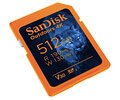Agie
Well-Known Member
- Joined
- Aug 19, 2016
- Messages
- 1,775
- Reaction score
- 881
- Location
- Perth, Australia
- Country
- Australia
- Dash Cam
- 70mai S500, A229 Pro, VS1, Nexus 4 Pro, S1 Pro, A119 v3v2v1
Having seen the advances over recent years in dashcams, we haven't seen much in terms of the read and write speeds for microSD memory cards. Although cameras can now take up to 512GB UHS-I microSD memory cards, we haven't seen any compatible with the faster UHS-II standard (has come in handy for me with my mirrorless cameras). For example, the Vantrue Nexus 4 Pro runs on a Novatek NT98529 chipset, which if it's listed correctly, is on an ARM Cortex A9 processor architecture that is from like 15 years ago.....
I do wonder with 4K cameras and the bitrate at which they write to cards at, if it would be beneficial for dashcam manufacturers to move to UHS-II support. UFS I presume would add too much cost to the BOM for dashcams, so while it would be beneficial in terms of speed (my phone has UFS 3.1 and that writes at NVMe SSD speeds), this wouldn't work in the dashcam industry. Although let's face it, read and write's in the thousands of MB's a second would be pretty sweet for dashcams, to enable higher bitrate videos......
I do wonder with 4K cameras and the bitrate at which they write to cards at, if it would be beneficial for dashcam manufacturers to move to UHS-II support. UFS I presume would add too much cost to the BOM for dashcams, so while it would be beneficial in terms of speed (my phone has UFS 3.1 and that writes at NVMe SSD speeds), this wouldn't work in the dashcam industry. Although let's face it, read and write's in the thousands of MB's a second would be pretty sweet for dashcams, to enable higher bitrate videos......
Last edited:

